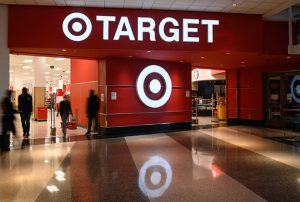Like someone mistaking a Target dress for a designer frock, the stock market has misread the retailer.
Shares in the big-box store dubbed “Tarzhay†for its
chic clothing outperformed strongly from 2017 until a few months ago. But since November they have underperformed both the market and shares of rival Walmart Inc Investors have worried that Target Corp’s profitability would be hurt by higher costs.
Target proved such fears unfounded. The operating margin should be at least 8% this year, the company said, demonstrating its ability to hold onto the gains it’s made over the past two years. Before the pandemic, its operating margin was 6%.
Target also upgraded its forecasts for revenue expansion and return on capital from fiscal 2023 onward.
Underlining the market’s misreading, the shares rose as much as 14%, helped by a jump in fourth-quarter sales.
Undoubtedly some of this is due to the lingering effects of the past two years, for example more eating at home. Inflation is probably helping too; higher prices bolster the value of retailers’ sales.
But much of Target’s success is down to the blueprint it has been following for five years: In an increasingly digital world, it has put its almost 2,000 stores at the heart of its strategy.
When Brian Cornell, the chief executive officer, set out this plan in 2017, he “saw jaws drop,†he recalled at an investor event. But the approach is paying off. Target has overhauled more than half of its estate, making its stores inspiring places to browse. More recently, it has added shops in shops, including 100 Ulta Beauty units.
It has also used its stores as hubs for its online business. More than 95% of Target’s fourth-quarter sales were fulfilled by its stores.
Many retailers now use their estates to support their digital business, through curbside pickup for example. But as Target started doing this in 2017, it is well ahead of the pack. It set out plans to invest $5 billion this year to cement its advantage. It will open 30 stores and revamp a further 200.
The company is also investing in its operations behind the scenes. By spring, it will have six sortation centers to organise digital orders packed by local stores for fast neighbourhood dispatch, and another five later this year. These will help free up capacity in shops to make them more efficient delivery hubs. Target is seeking to improve in other ways, too. Later this year, its curbside delivery service will accept returns and also allow customers to pick up Starbucks products.
—Bloomberg
 The Gulf Time Newspaper One of the finest business newspapers in the UAE brought to you by our professional writers and editors.
The Gulf Time Newspaper One of the finest business newspapers in the UAE brought to you by our professional writers and editors.
